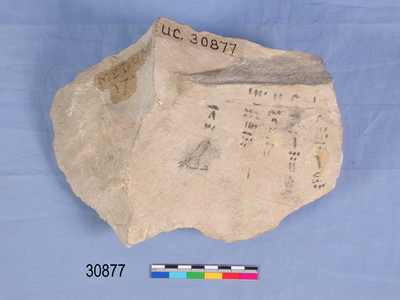Meydum Mastaba 17, the finds
The human remains found in Mastaba 17 have aroused discussion since they were uncovered. Flinders Petrie (Petrie 1892: 14-15) described the find as followed: 'on examination of the left radius and ulna (the two bones of the lower arm), it was found that no particle of flesh or skin intervened anywhere between the wrapping and the bones, the linen lying directly on the bone'.
This description was taken as direct evidence for defleshing the body of the dead. However, it has been argued that the evidence described by Petrie is weak and the flesh just disappeared without trace (Tacke 1996: 316). Defleshing the body of the dead is attested in the Old Kingdom (compare: mummification in the Old Kingdom). Another notable feature of the human remains preserved at Meydum Mastaba 17 are the viscera wrapped in linen; this seems to be one of the earliest examples of taking the soft internal organs out of the body and wrapping them in linen.
|
UC 30853
|
UC 30879 a-d
|
UC 30896
|
UC 31203
|
|
copper tool
|
(four fragments of gold leaf)
|
viscera in wrapping ?
|
a piece of copper
|
linen (examples) fragments:
UC 31010 A-M wrapping containing viscera (one example)
an ostracon

Copyright © 2000 University College London. All rights reserved.